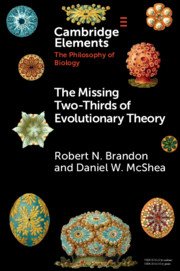Element contents
The Missing Two-Thirds of Evolutionary Theory
Published online by Cambridge University Press: 25 February 2020
Summary
- Type
- Element
- Information
- Online ISBN: 9781108591508Publisher: Cambridge University PressPrint publication: 26 March 2020
Bibliography
- 21
- Cited by

